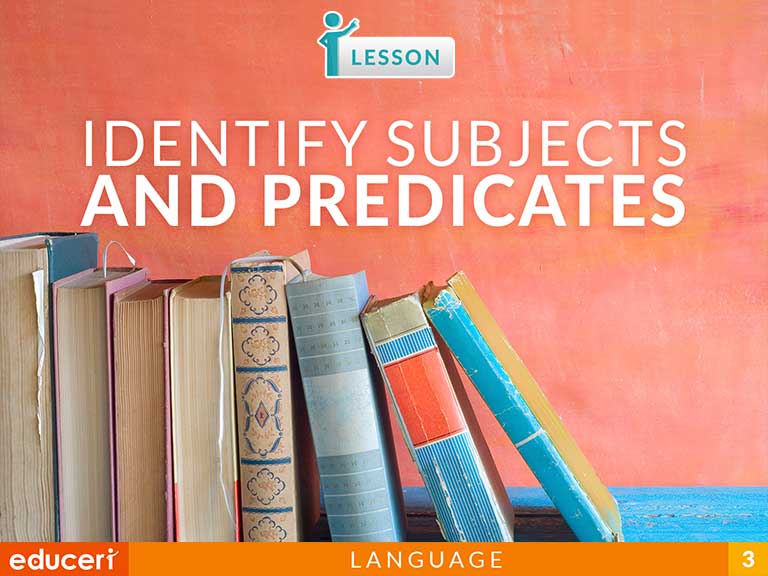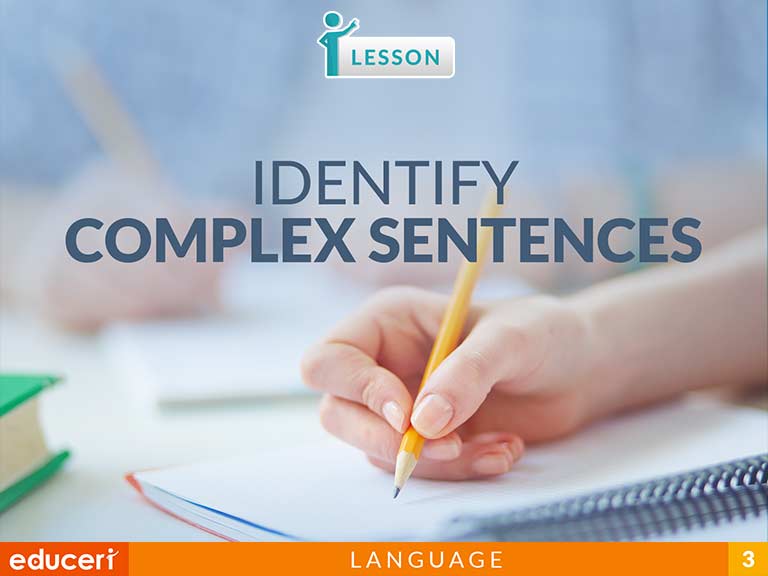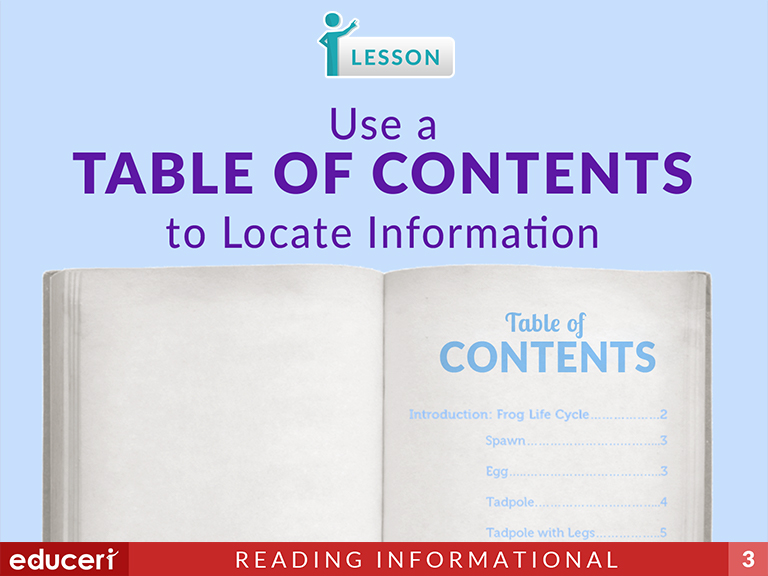All Lessons

Identify Regular & Irregular Verbs
This writing conventions lesson focuses on identifying regular and irregular verbs. The lesson includes research-based strategies and strategic questions that prepare students for assessments. In this lesson, students read both present and past tense verbs and identify the change. Then students determine the type and use both verbs correctly in a sentence. In addition to the lesson, there are eight pages of Independent Practice and review with questions modeled after current adaptive testing items.
Share This Lesson

Use Antonyms to Determine the Meaning of Words
This reading vocabulary lesson focuses on using antonyms to determine the meaning of words. The lesson includes research-based strategies and strategic questions that prepare students for assessments. In this lesson, students use contrast signal words (but, not, however, while, and yet) to identify antonyms and determine the meaning of words. In addition to the lesson, there are four pages of Independent Practice and review with questions modeled after current adaptive testing items.
Share This Lesson

Determine the Meaning of Homographs
This reading vocabulary lesson focuses on using homographs to determine the meaning of words. The lesson includes research-based strategies and strategic questions that prepare students for assessments. In this lesson, students use word definitions and clues from the text to determine the meaning of homographs. In addition to the lesson, there are four pages of Independent Practice and review with questions modeled after current adaptive testing items.
Share This Lesson

Distinguish Between Meanings of Homophones
This reading vocabulary lesson focuses on using homophones to determine the meaning of words. The lesson includes research-based strategies and strategic questions that prepare students for assessments. In this lesson, students use spelling and definitions of homophones to use the word correctly in a sentence. In addition to the lesson, there are four pages of Independent Practice and review with questions modeled after current adaptive testing items.
Share This Lesson

Use Synonyms to Determine the Meaning of Words
Share This Lesson

Determine the Meaning of Words Using Context Clues
This reading vocabulary lesson focuses on determining the meaning of unknown words using context clues. The lesson includes research-based strategies and strategic questions that prepare students for assessments. In this lesson, students use nearby words (context clues) to determine the meaning of an unknown word in a sentence. In addition to the lesson, there are four pages of Independent Practice and review with questions modeled after current adaptive testing items.
Share This Lesson

Produce Complete Sentences (Subject and Predicate)
This writing conventions lesson focuses on using subjects and verbs to write complete sentences. The lesson includes research-based strategies and strategic questions that prepare students for assessments. In this lesson, students identify the verb that describes the action of a character in a picture. Then, writes a complete sentence using the verb and the subject shown in the picture. In addition to the lesson, there are four pages of Independent Practice and review with questions modeled after current adaptive testing items.
Share This Lesson

Recognize Onomatopoeia
This literary response and analysis lesson focuses on recognizing onomatopoeia. The lesson includes research-based strategies and strategic questions that prepare students for assessments. In this lesson, students identify the use of onomatopoeia in poetry and short passages. In addition to the lesson, there are four pages of Independent Practice and review with questions modeled after current adaptive testing items.
Share This Lesson

Use Glossaries to Locate Information
RI.3.4 Determine the meaning of general academic and domain-specific words and phrases in a text relevant to a grade 3 topic or subject area.
L.3.4L.3.4 Determine or clarify the meaning of unknown and multiple-meaning word and phrases based on grade 3 reading and content, choosing flexibly from a range of strategies.
L.3.4.DL.3.4.D Use glossaries or beginning dictionaries, both print and digital, to determine or clarify the precise meaning of key words and phrases.
Share This Lesson

Identify and Use Adjectives
This writing conventions lesson focuses on identifying and using adjectives. The lesson includes research-based strategies and strategic questions that prepare students for assessments. In this lesson, students identify and use words that describe a noun. In addition to the lesson, there are four pages of Independent Practice and review with questions modeled after current adaptive testing items.
Share This Lesson

Identify Subjects and Predicates
This writing conventions lesson focuses on identifying subjects and predicates. The lesson includes research-based strategies and strategic questions that prepare students for assessments. In this lesson, students identify and label the subject and predicate in a sentence and cross out any sentences that are not complete. In addition to the lesson, there are four pages of Independent Practice and review with questions modeled after current adaptive testing items.
Share This Lesson

Identify Types of Simple Sentences
This writing conventions lesson focuses on identifying types of simple sentences. The lesson includes research-based strategies and strategic questions that prepare students for assessments. In this lesson, students label subject and verbs in sentences and identify the type of simple sentence (SV, SSV, SVV, SSVV). In addition to the lesson, there are four pages of Independent Practice and review with questions modeled after current adaptive testing items.
Share This Lesson

Capitalize Geographical Names and Historical Periods
This writing conventions lesson focuses on capitalizing geographical names and historical events. The lesson includes research-based strategies and strategic questions that prepare students for assessments. In this lesson, students identify historical events and geographical names in sentences and mark the letters to be capitalized. In addition to the lesson, there are four pages of Independent Practice and review with questions modeled after current adaptive testing items.
Share This Lesson

Use a Dictionary to Locate Words
L.3.4 Determine or clarify the meaning of unknown and multiple-meaning word and phrases based on grade 3 reading and content, choosing flexibly from a range of strategies.
L.3.4.DL.3.4.D Use glossaries or beginning dictionaries, both print and digital, to determine or clarify the precise meaning of key words and phrases.
This writing strategies lesson focuses on using the organization of a dictionary to locate words. The lesson includes research-based strategies and strategic questions that prepare students for assessments. In this lesson, students use the organization of the dictionary to practice looking up words in alphabetical order. In addition to the lesson, there are eight pages of Independent Practice and review with questions modeled after current adaptive testing items.
Share This Lesson

Use a Thesaurus to Locate Words
L.3.4 Determine or clarify the meaning of unknown and multiple-meaning word and phrases based on grade 3 reading and content, choosing flexibly from a range of strategies.
L.3.4.DL.3.4.D Use glossaries or beginning dictionaries, both print and digital, to determine or clarify the precise meaning of key words and phrases.
This writing strategies lesson focuses on using the organization of a thesaurus to locate words. The lesson includes research-based strategies and strategic questions that prepare students for assessments. In this lesson, students use the organization of the thesaurus (synonyms, antonyms, etc) to practice looking up new words. In addition to the lesson, there are eight pages of Independent Practice and review with questions modeled after current adaptive testing items.
Share This Lesson

Form and Use Simple Tense Verbs
This language lesson focuses on forming and using simple tense verbs. In this lesson, students will read pairs of sentences, identify the verbs, and then identify which sentence contains the present, past, or future tense verb.
Share This Lesson

Expand Simple Sentences
This Language lesson requires students to produce simple sentences on given topics. The lesson includes research-based strategies and strategic questions that prepare students for assessments. In this lesson, Students use a sample all of the major components of a sentence to describe a picture using a complete simple sentence.
Share This Lesson

Identify Complex Sentences
This Language lesson focuses on having students identify complex sentences. Students will be asked to identify the clauses and determine the structure of the sentence based on the subordinating conjunction. The lesson includes research-based strategies and strategic questions that prepare students for assessments. In addition to the lesson, there are four pages of facts and details related to topics for review and organizing.

